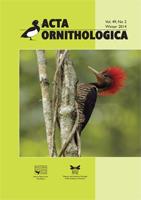Nest structure and nesting material may have important consequences for avian reproductive behaviour and performance. Nuthatches Sitta spp. build nests made of loose bark flakes without any structure or nest cup to contain eggs and nestlings. We have aimed at understanding the implications of unstructured bark flake nests in Nuthatches for microclimatic conditions in the nest, ectoparasite infestation, parental care and nestling begging through a nest exchange experiment. To that end, we have experimentally replaced natural bark nests of Nuthatches Sitta europaea by structured moss nests built at the same time by Great Tits Parus major for some pairs and compared their ectoparasite abundances, nest microclimate variables and the behaviour of nestlings and parents with those in natural Nuthatch nests. The experimental treatment did not affect ectoparasite loads. Nest-boxes containing structured nests made of moss showed higher and more variable temperatures, higher thermal maxima and less variable humidity conditions than unstructured control nests made of bark flakes. However, bark flakes conserve heat better than moss during the night and morning hours, which may be transmitted to buried eggs and nestlings and reduce incubation and brooding costs for females. This may explain why females remained out for longer during incubation recesses at natural nests. Nestlings of 9 days in natural nests rested further apart than nestlings in structured experimental nests although there were no differences with respect to begging intensity between the two treatments. Hatching and fledging success was similar in both groups but experimental nests resulted in nestlings with shorter tarsi and wings before fledging. The poorer nestling growth in experimental nests cannot be explained by effects of ectoparasites, nestling aggregation or nestling begging or parental care. Adaptations for remaining buried in the nest material and the heat-conserving properties of loose bark flakes may reduce energy costs for nestlings during female absences.
How to translate text using browser tools
1 December 2014
The Significance of Nest Structure and Nesting Material for Hole-Nesting Passerines: an Experimental Study with Nuthatches Sitta europaea
Alejandro Cantarero,
Jimena López-Arrabé,
Irene Saavedra-Garcés,
Víctor Rodríguez-García,
Antonio Palma,
Juan Moreno
ACCESS THE FULL ARTICLE

Acta Ornithologica
Vol. 49 • No. 2
December 2014
Vol. 49 • No. 2
December 2014
ectoparasites
incubating behaviour
nest microclimate
nest structure
nesting material
nestling condition
Nuthatch




